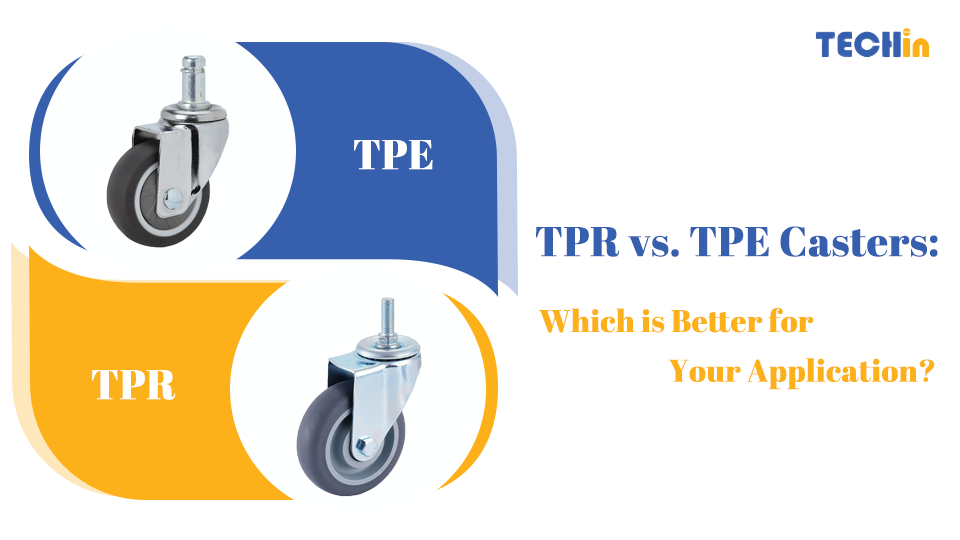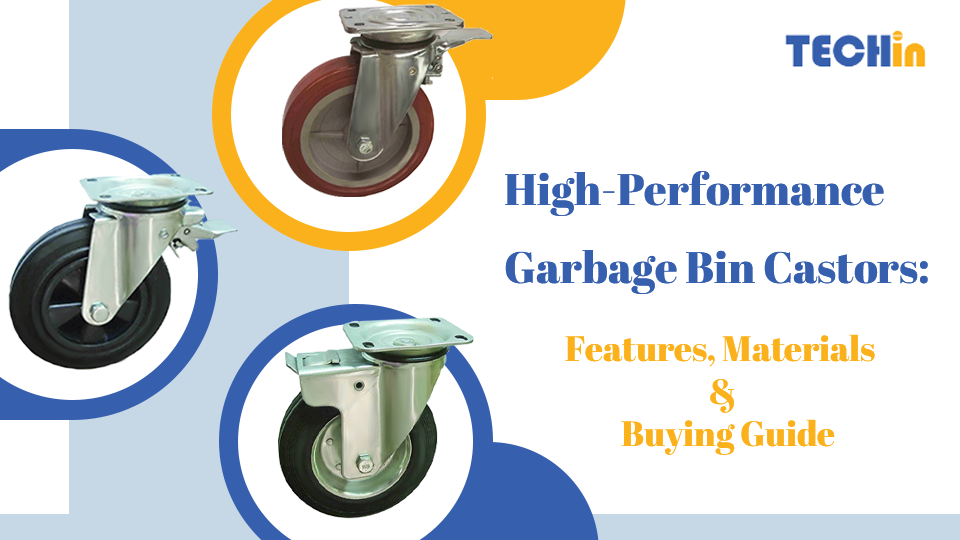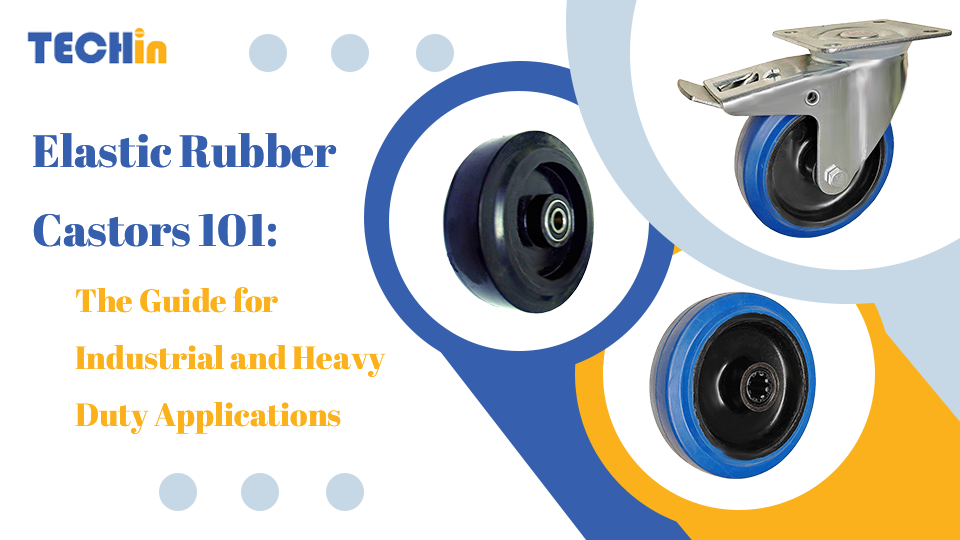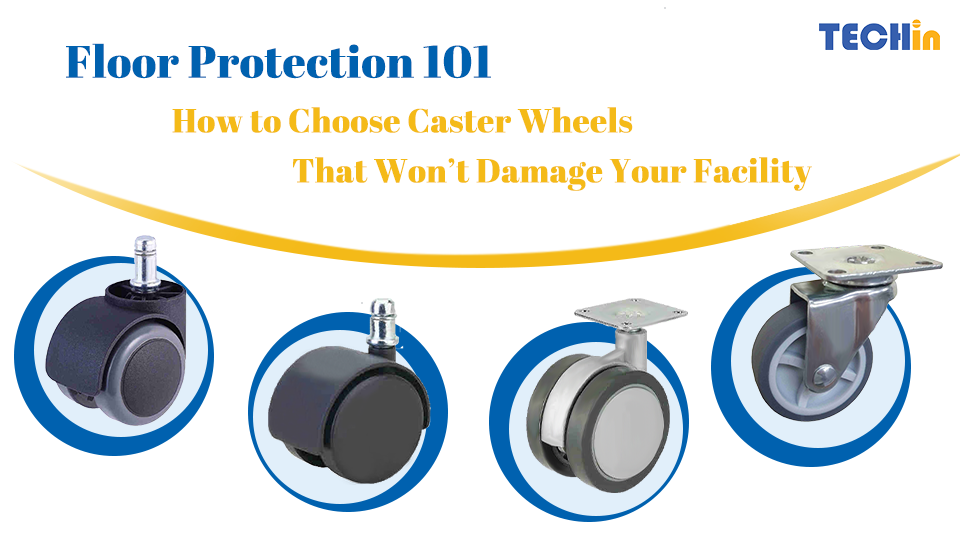Introduction
Choosing the right caster material can be a challenge. Many of our customers find themselves comparing TPR and TPE, unsure which one truly delivers the best performance for their needs. It’s an important decision, as the wrong choice can lead to higher operational costs, floor damage, or equipment downtime. Let’s clarify the differences to help you select the perfect fit for your application.
TPR (Thermoplastic Rubber) casters are your go-to for cost-effective, quiet, and non-marking performance on lighter loads. In contrast, TPE (Thermoplastic Elastomer) casters are softer, more versatile, and well-suited for a wider range of applications. The best choice depends on your operational environment: TPR excels in economy and general durability, while TPE offers enhanced flexibility and a smoother ride in sensitive settings.
Now that you have the overview, let’s explore each caster type in detail, compare their pros and cons, and help you find the right fit for your project.
What is TPR Caster Wheel?
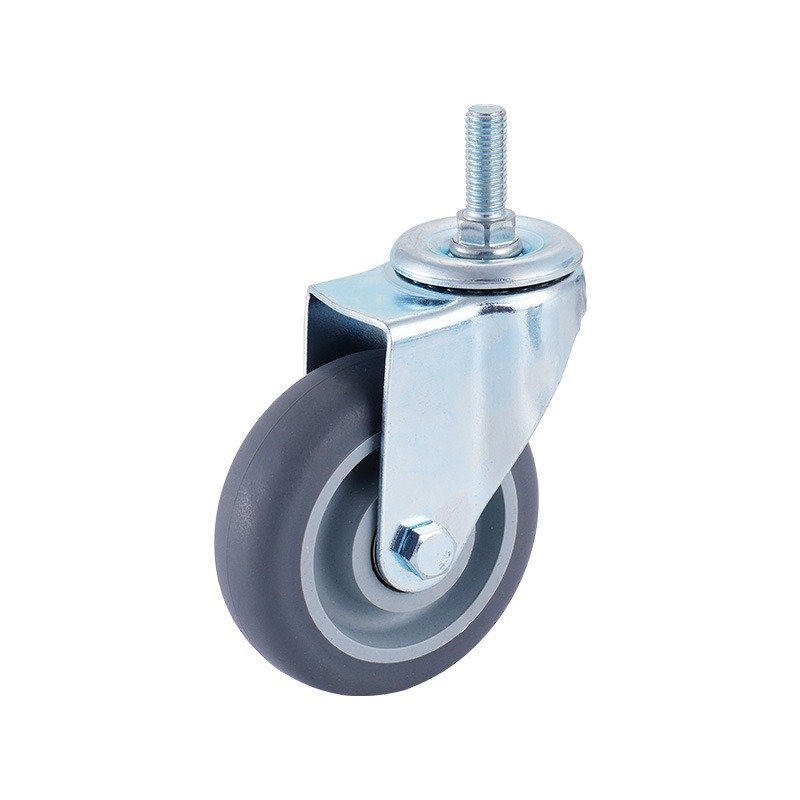
A TPR (Thermoplastic Rubber) caster wheel is best understood as a hybrid material. It’s created by blending the properties of rubber with the processability of plastic. This gives you a material that has the flexibility of rubber but can be molded as easily as plastic, making it ideal for various caster designs.
These wheels are engineered to be non-marking, low-noise, and gentle on floors. This makes them a popular choice for hospitals, office furniture, institutional carts, and light-duty equipment. You’ll often see TPR come up in the TPR casters vs PU casters debate, especially when a quiet ride and budget are primary concerns.
Key Characteristics:
- Moderate elasticity
- Shock absorption
- Quiet operation
- Floor protection
- Resistant to chemicals and mild acids
What is TPE Caster Wheel?
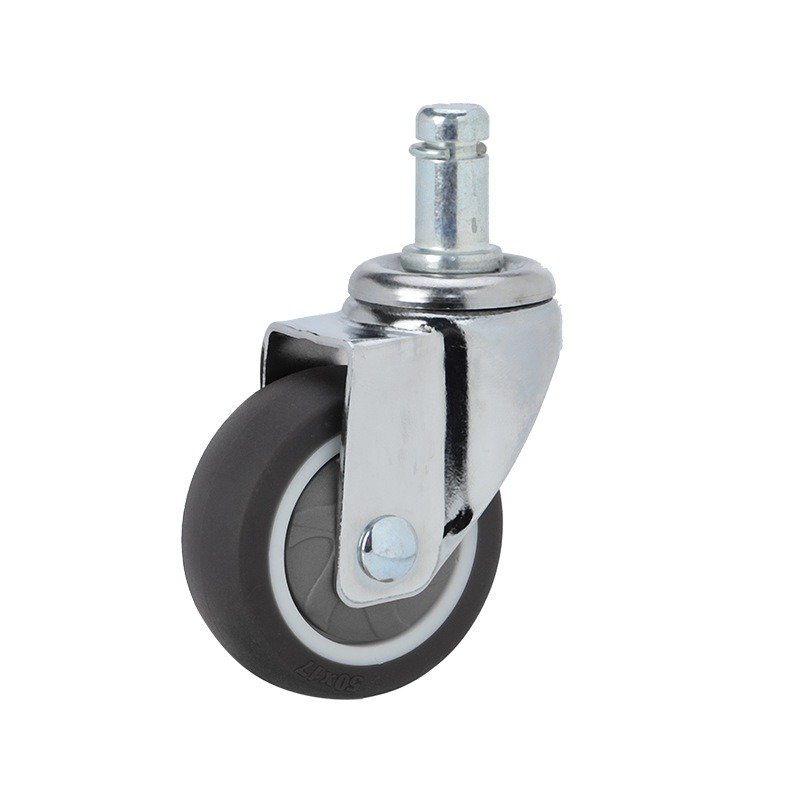
TPE (Thermoplastic Elastomer) caster wheels are made from a family of advanced, rubber-like materials. Their key advantage is a combination of the processing advantages of plastics with the performance characteristics of elastomers. TPEs are highly regarded for their soft touch, chemical resistance, and versatility.
TPE caster wheels are suitable for a broader range of applications, especially where floor protection, ergonomic comfort, and resistance to harsh environments are required. You’ll often see them on medical devices, laboratory equipment, and high-end office furniture where a premium feel and function are important.
TPE casters are also relevant in TPR vs TPU casters comparisons, given their similar flexibility but different performance under load and temperature.
Key Characteristics:
- Excellent rebound and flexibility
- Resistant to chemicals and temperature variations
- Softer ride for delicate equipment
- Often more customizable for specific applications
What are the Advantages and Disadvantages of TPR Casters?
✅ Advantages of TPR Casters:
- Non-marking: Ideal for indoor use on sensitive flooring.
- Quiet and smooth: Great for environments like hospitals or offices where noise is a concern.
- Cost-effective: Generally more affordable than TPE or PU options.
- Chemical resistance: Withstands light acids and common chemicals.
- Low rolling resistance: Makes equipment easier to push and maneuver.
❌ Disadvantages of TPR Casters:
- Lower load capacity: Not suitable for heavy-duty industrial use.
- Heat sensitivity: May deform under high-temperature conditions.
- Limited outdoor use: Can degrade faster with UV exposure or on rough terrain.
In summary, TPR’s advantages make it an excellent choice for most lightweight, indoor applications. However, it’s important to consider its limitations in rugged or high-heat environments.
What are the Advantages and Disadvantages of TPE Casters?
✅ Advantages of TPE Casters:
- Versatility: Performs well in various environments, including outdoor or high-moisture areas.
- Soft-touch and quiet: Reduces vibrations and noise in sensitive settings.
- Highly customizable: Can be engineered for anti-static, antimicrobial, or high-grip functions.
- Strong rebound and flexibility: Makes them ideal for protecting delicate or valuable equipment.
❌ Disadvantages of TPE Casters:
- Higher cost: More expensive than TPR and some PU alternatives.
- Less durable in abrasive environments: The softer composition can wear quicker on rough surfaces.
- Limited high-heat tolerance: While better than TPR in some cases, still not ideal for extreme temperatures.
Despite the higher initial cost, the applications for TPE caster wheels are expanding due to their unique blend of comfort and adaptability in demanding sectors like healthcare, cleanrooms, and luxury furniture.
What is the Difference Between TPR and TPE Casters?
While both TPR and TPE offer excellent floor protection and a quiet roll, the primary differences lie in their material composition, performance characteristics, and cost. Think of TPR Caster as the practical, economical choice—a straightforward blend of rubber and plastic that’s perfect for general-purpose applications where budget is a key consideration. TPE Caster, in contrast, is a more advanced material engineered for higher performance. It offers a softer, more cushioned ride, superior flexibility, and can be customized for specific needs like anti-static or antimicrobial properties. This makes it the premium option for sensitive equipment or demanding environments, which is reflected in its higher cost.
The table below provides a side-by-side comparison to see how these differences play out across key features.
| Feature | TPR Casters | TPE Casters |
|---|---|---|
| Material Composition | Thermoplastic Rubber (blend of rubber & plastic) | Thermoplastic Elastomer (rubber-like plastic compounds) |
| Load Capacity | Light to medium-duty | Light to medium-duty (varies by design) |
| Floor Protection | Excellent | Excellent |
| Noise Level | Low | Very Low |
| Outdoor Use | Limited | Moderate |
| Customizability | Low | High |
| Cost | Lower | Higher |
| Applications | Institutional, office, hospital | Medical, lab, electronics, ergonomic furniture |
Which Caster Wheel Material is Best for My Application?
So, how do you determine the best material for your needs? Your decision should be guided by three main factors: your application environment, budget, and performance requirements.
Here are a few example scenarios:
- Office Chairs or Light Carts (Indoor): TPR casters are affordable and quiet—a perfect fit.
- Medical Equipment or Cleanroom Devices: TPE’s softness and potential for anti-microbial properties make it the winner here.
- Retail Displays or Furniture: TPE adds a premium feel and superior floor protection, even in high-traffic areas.
- Light Industrial Settings: TPR can work well if the environment is clean and temperature-controlled.
If you’re debating between TPR casters vs PU casters, note that PU (Polyurethane) typically supports higher loads but may be harsher on floors and noisier than either TPR or TPE.
Maintenance Tips for TPR and TPE Caster Wheels
Regardless of which caster you choose, proper maintenance is key to extending its lifespan and ensuring consistent performance. Here are some essential tips for both TPR and TPE casters:
🔧 Maintenance Checklist:
- Inspect Regularly: Look for signs of wear, flat spots, or cracking.
- Clean Surfaces: Remove debris that can cause floor damage or affect wheel rotation.
- Lubricate Bearings: Ensure smooth movement, especially for swivel casters.
- Avoid Overloading: Stick to recommended load limits to prevent deformation.
- Protect from Chemicals: While resistant, long exposure to harsh chemicals can degrade the materials.
- Store Properly: If unused, keep casters in a dry, room-temperature environment.
These tips apply whether you’re using TPR, TPE, or even TPU casters, helping you maintain optimal performance over time.
Summary
In conclusion, both TPR and TPE casters are excellent materials that bring unique benefits to different applications. The right choice ultimately depends on your specific load requirements, budget, and operational environment. By considering your priorities and comparing the features we’ve outlined, you can confidently select the caster that best fits your needs. Have questions or need help deciding? Share your thoughts in the comments below.

